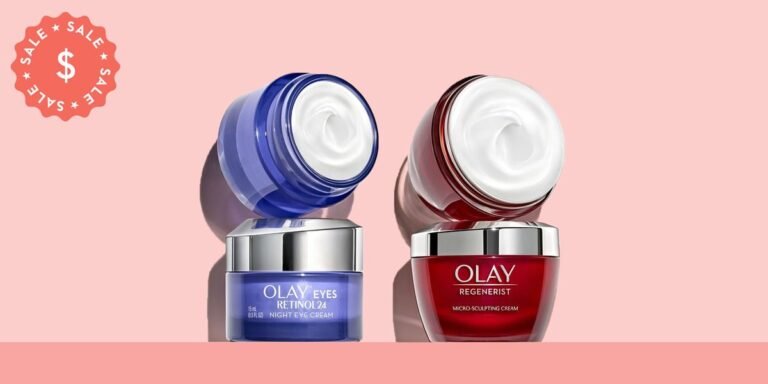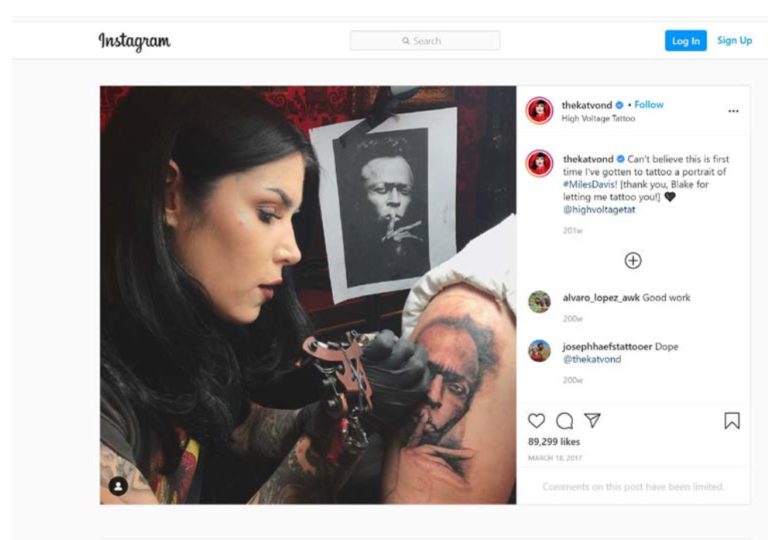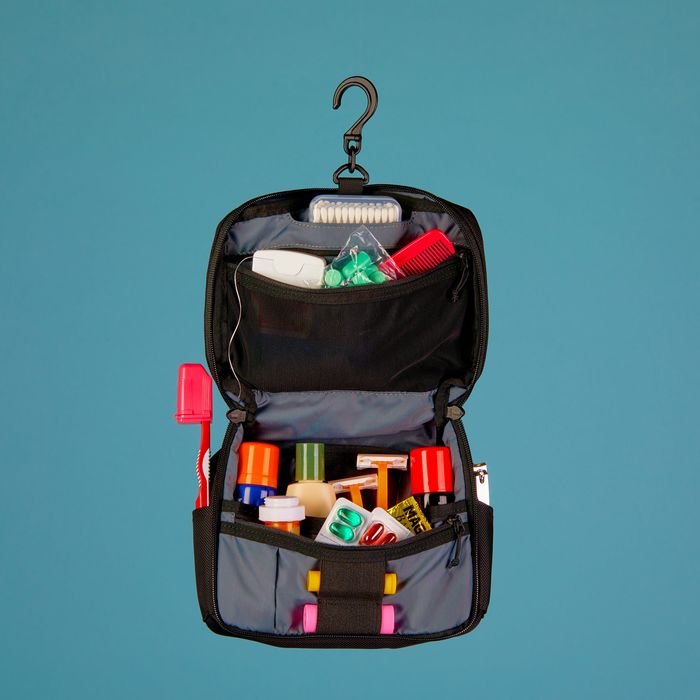Everything You Need to Know Before Getting Your First Tattoo

Introduction
Before getting your first tattoo, it is crucial to be well-informed about the process and what to expect. Whether you’re a tattoo enthusiast or someone who’s been contemplating getting a tattoo for a while, understanding the key aspects of this journey is essential. In this article, we will explore everything you need to know before getting your first tattoo, providing you with expert advice from professional tattoo artists and dermatologists.
To start off, let’s take a brief overview of the article “First Tattoo Tips: What to Know Before Your Appointment” from Allure. This comprehensive guide covers various topics related to getting your first tattoo:
- Picking a reputable artist
- Preparing for your appointment
- Choosing the perfect design and placement
- Managing pain during the process
- Tattoo etiquette
- Post-tattoo care
The article not only offers insights from experienced tattoo artists but also provides valuable advice from dermatologists regarding skin health and aftercare. By combining these perspectives, we aim to provide you with a well-rounded understanding of the tattooing process and help you make informed decisions.
1. Picking a Reputable Tattoo Artist
When it comes to getting a tattoo, choosing the right artist is crucial. You want someone who not only has the technical skills but also understands your vision and can bring it to life. Here are some key points to consider when picking a reputable tattoo artist:
Researching and Finding Reputable Tattoo Artists
Start by doing your homework and researching local tattoo artists in your area. Look for artists who have a strong reputation and a portfolio that aligns with your style preferences. Online platforms such as Instagram, Facebook, and tattoo forums can be great resources for finding talented artists.
Tips for Checking Portfolios and Reviews
Take the time to thoroughly review the portfolios of potential tattoo artists. Look for consistency in their work, attention to detail, and quality of their line work and shading. Additionally, read reviews from past clients to get an idea of their overall experience and satisfaction.
Considering the Artist’s Style and Specialization
Every tattoo artist has their own unique style and specialization. Some may excel in black and grey realism, while others may specialize in traditional or watercolor tattoos. Consider your desired tattoo style and find an artist who specializes in that area.
Asking for Recommendations from Trusted Sources
Don’t hesitate to ask for recommendations from friends, family members, or even strangers with impressive tattoos. Personal referrals can provide valuable insights into an artist’s professionalism, skill level, customer service, and overall experience.
Ensuring a Safe Tattoo Environment
Apart from the artist’s skills, it’s equally important to ensure that you’re getting inked in a safe environment. So, look out for specific qualities in the tattoo shop, such as cleanliness, adherence to proper sterilization practices, and licensed practitioners.
Exploring the Tattoo Artist’s Journey
Understanding an artist’s journey can also give you an idea of their dedication and passion towards their craft. Take a moment to read about Izabella Bastidas’ story, for instance. Such insights into an artist’s background can help you connect with them on a deeper level.
Remember, finding the right tattoo artist is subjective and ultimately depends on your personal preferences. Take the time to research, view portfolios, read reviews, and seek recommendations to ensure you find an artist who aligns with your vision and can create a tattoo that you’ll love for years to come.
By following these tips for picking a reputable tattoo artist, you can increase your chances of having a positive experience during the tattoo process.
2. Making and Preparing for Your Tattoo Appointment
When it comes to getting your first tattoo, making and preparing for your appointment is a crucial step in the process. This section will guide you through the necessary steps to ensure a smooth and successful experience.
Contacting the Chosen Tattoo Artist
Once you have done your research and identified a reputable tattoo artist that aligns with your style and preferences, it’s time to reach out and schedule an appointment. Here are some tips for effective communication:
- Phone or Email: Most tattoo artists prefer to be contacted through email or phone. Take note of their preferred method of communication and reach out accordingly.
- Be Polite and Professional: When contacting the artist, remember to be polite and professional. Introduce yourself, express your interest in their work, and inquire about their availability for an appointment.
Inquiring About Availability, Waiting Times, and COVID-19 Safety Measures
When scheduling a tattoo appointment, it’s important to inquire about various factors that can affect your experience. Here are some key points to discuss:
- Availability: Ask the tattoo artist about their availability and if they have any upcoming openings that align with your desired timeline.
- Waiting Times: Tattoo artists often have a waiting list due to high demand. It’s essential to ask about the estimated waiting time between booking the appointment and getting tattooed.
- COVID-19 Safety Measures: In light of the ongoing pandemic, it’s crucial to discuss the safety protocols followed by the tattoo studio. Ask about their sanitation practices, mask requirements, and any other measures they have in place to ensure a safe environment. You can refer to this resource for insights on how body piercing studios are adapting during these times.
Discussing Design Ideas, Placement Options, and Estimated Cost
During your initial conversation with the tattoo artist, take the opportunity to discuss your design ideas, placement options, and get an idea of the estimated cost. Here are some points to consider:
- Design Ideas: Share your vision with the artist and provide any reference images or sketches that can help them understand what you’re looking for. Be open to their suggestions and feedback based on their expertise. You might find this article helpful in understanding their perspective.
- Placement Options: Discuss potential placements for your tattoo and consider factors like visibility, future body changes, and personal significance. The artist can provide valuable insights and recommendations based on their experience.
- Estimated Cost: While it may be difficult to determine the exact cost of a tattoo without a consultation, you can discuss a rough estimate with the artist. Factors such as size, complexity, and color will influence the final price.
Following Pre-Appointment Care Instructions from the Tattoo Artist
Once your appointment is scheduled, the tattoo artist may provide you with pre-appointment care instructions. It’s crucial to follow these guidelines to ensure optimal results and minimize any potential complications. Some common pre-appointment care instructions include:
- Avoid Alcohol and Blood Thinners: It’s important to refrain from consuming alcohol or taking blood-thinning medications before your appointment, as they can increase bleeding during the tattooing process.
- Stay Hydrated: Drink plenty of water in the days leading up to your appointment to keep your skin
3. Choosing the Right Tattoo Design and Placement
When getting your first tattoo, deciding on the design and placement is crucial. Here are some important things to think about:
Factors to Consider
- Visibility: Decide how visible you want your tattoo to be. Will it be easily seen or more hidden? Think about your personal and professional life, as well as any potential future consequences. Remember that certain body parts like the hands, neck, or face may have social or workplace restrictions.
- Future Body Changes: Consider how your tattoo will change as you age. Are you planning on gaining or losing weight? Are there any body areas that may undergo significant changes over time, like the abdomen during pregnancy? Keeping these factors in mind can help you choose a placement that will maintain the look of your tattoo as your body changes.
- Personal Meaning: Your tattoo should have significance to you. Take some time to reflect on symbols, images, or quotes that hold meaning in your life. Whether it represents a loved one, an important moment, or an aspect of your identity, select a design that deeply resonates with you.
Tips for Making Decisions
“One way to find inspiration for your tattoo design is by browsing through online galleries or social media platforms dedicated to tattoos. You can also create a mood board or collect images that speak to you and share them with your chosen artist for reference. They can then work with you to create a custom design that incorporates your ideas and suits your desired placement.”
Remember, this is a permanent piece of art on your body, so take the time to carefully consider both the design and placement before making a final decision.
“If you’re unsure about the design or placement options, don’t hesitate to consult with your tattoo artist. They have experience and expertise in creating tattoos that not only look visually appealing but also work well with the body’s natural contours. They can provide valuable insights and guidance to help you make an informed decision.”
By thoughtfully considering these factors, you’ll be on your way to selecting a tattoo design and placement that holds personal significance and will stand the test of time.
4. Managing Pain and Discomfort During the Tattoo Process
When it comes to getting a tattoo, managing pain and discomfort is a common concern for many people. While everyone’s pain tolerance varies, there are several strategies you can employ to minimize discomfort during the tattoo process:
1. Communicating Your Pain Tolerance with the Tattoo Artist
It’s essential to have open and honest communication with your tattoo artist about your pain tolerance. By discussing this beforehand, they can adjust their technique or offer suggestions to help make the experience more comfortable for you.
2. Techniques for Distraction, Relaxation, and Pain Management
There are various techniques you can try to distract yourself and relax during the tattooing process:
- Deep Breathing: Deep breathing exercises can help calm your nerves and reduce pain perception. Take slow, deep breaths in through your nose and out through your mouth.
- Meditation or Mindfulness: Practicing mindfulness techniques or meditation can help shift your focus away from any discomfort you may be feeling.
- Listening to Music or Podcasts: Bringing headphones and listening to your favorite music or engaging podcasts can provide a distraction and help take your mind off the pain.
- Engaging in Conversation with Your Tattoo Artist or a Friend: Striking up a conversation with your tattoo artist or bringing a friend along to chat with during the session can divert your attention from any discomfort.
Remember, what works for one person may not work for another. Experiment with different techniques to find what helps you manage pain and stay comfortable during the tattooing process.
By effectively managing pain and discomfort, you can have a more positive tattoo experience. Don’t hesitate to discuss your concerns with your tattoo artist before the session so that they can provide guidance and support throughout the process.
To further enhance your understanding of pain management during tattoo sessions, you may find this article on navigating pain and pain management during tattoo sessions informative.
5. Etiquette: Tipping and Showing Appreciation to Your Tattoo Artist
When it comes to getting a tattoo, showing appreciation to your artist is not only thoughtful but also an integral part of the process. Here are some important points to consider regarding tattoo artist gratuity and tipping etiquette for tattoo artists:
Understanding the Importance of Tipping as a Form of Appreciation
Tipping your tattoo artist is a way to show gratitude for their hard work and creativity. It acknowledges the time and effort they put into creating a piece of art that will stay with you for a lifetime.
Guidelines for Calculating a Fair Tip Amount
While there are no strict rules for how much to tip your tattoo artist, it’s generally recommended to tip between 15% and 20% of the total cost of the tattoo. If you received exceptional service or if the tattoo required multiple sessions, consider tipping on the higher end of the spectrum. It’s also worth noting that tips can be given in cash or through other payment methods based on the artist’s preference.
By understanding the significance of tipping and following these general guidelines, you can ensure that you express your appreciation for your tattoo artist’s dedication and skill in a meaningful way.
6. Post-Tattoo Care: Ensuring Proper Healing and Longevity
After getting your tattoo, it’s important to take proper care of it for both healing and long-term preservation. Here are some key things to know:
1. Follow Aftercare Instructions
Your tattoo artist will give you specific instructions on how to care for your new tattoo. This may include:
- Washing the tattoo gently with mild soap
- Applying a thin layer of ointment or moisturizer
- Keeping the tattoo out of direct sunlight
- Avoiding activities that could irritate the area (such as swimming or excessive sweating)
- Not picking at any scabs that may form
Following these instructions is crucial for preventing infection and promoting proper healing.
2. Understand the Healing Process
The healing timeline can vary from person to person, but generally, it takes about 2-4 weeks for a tattoo to fully heal. During this time, you may experience:
- Scabbing: It’s normal for small scabs to form as the tattoo heals. It’s important not to pick or scratch at them, as this can cause damage to the design.
- Itching: The tattooed area may feel itchy as it heals. Avoid scratching it and instead gently pat or tap the skin if you need relief.
- Peeling: After the scabs have fallen off, the top layer of skin may peel. This is also normal and should be allowed to happen naturally.
3. Maintain Your Tattoo
Once your tattoo has healed, your job isn’t done! To keep your ink looking fresh and vibrant for years to come, make sure to:
- Moisturize regularly: Use a fragrance-free lotion or tattoo-specific moisturizer to keep the skin hydrated. This can help prevent dryness and fading.
- Protect from the sun: UV rays can cause tattoos to fade quickly, so always apply a broad-spectrum sunscreen (SPF 30 or higher) before exposing your tattoo to sunlight.
- Be mindful of activities: Avoid situations where your tattoo could get scraped, bumped, or excessively stretched. This includes wearing tight clothing or gear that rubs against the design.
By taking these steps and being proactive in caring for your tattoo, you’ll maximize its lifespan and keep it looking its best.
Conclusion
Embarking on your first tattoo journey can be an exciting and meaningful experience. By being well-informed and following expert advice, you can ensure a positive outcome and a tattoo that you will love for years to come. Here are some final thoughts to consider:
- Research is key: Take the time to research and find a reputable tattoo artist who aligns with your style and preferences. Look at their portfolios, read reviews, and ask for recommendations from trusted sources.
- Communication is crucial: Before your appointment, reach out to the chosen tattoo artist to discuss your design ideas, placement options, and estimated cost. Also, inquire about their availability, waiting times, and any COVID-19 safety measures in place.
- Consider the significance: When deciding on the perfect tattoo design and placement, think about factors such as visibility, future body changes, and personal significance. Choose something that speaks to you and holds special meaning in your life.
- Manage pain and discomfort: Communicate your pain tolerance with the tattoo artist and discuss techniques for distraction, relaxation, and pain management during the tattooing process. Remember that everyone’s pain threshold is different, so be open about your needs.
- Show appreciation: Tipping your tattoo artist is an important form of showing appreciation for their artistry and professionalism. Consider guidelines for calculating a fair tip amount based on the quality of work and overall experience.
- Follow aftercare instructions: After getting your tattoo, ensure proper healing and longevity by following the aftercare instructions provided by your tattoo artist. This includes cleaning techniques, moisturizing routines, avoiding certain activities or substances that may affect the healing process.
Embarking on this new chapter of self-expression can be both thrilling and nerve-wracking. By taking the time to educate yourself, communicate openly with your tattoo artist, and follow proper aftercare instructions, you can make sure that your first tattoo experience is a positive and memorable one. Happy tattooing!
Note: The information provided in this article is for general informational purposes only and should not be considered as professional medical or tattoo advice. Always consult with a qualified tattoo artist or dermatologist for personalized guidance.










